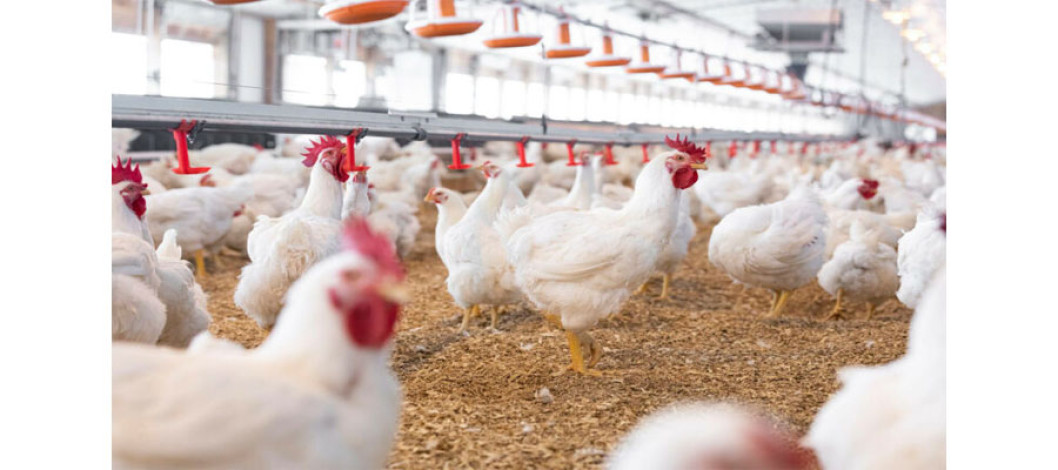
The global demand for animal protein is forecast to continue growing and with poultry meat playing a key role in meeting this demand, broiler producers need to keep increasing production. However, there is also a growing awareness that climate change is leading to more extreme weather events, reducing biodiversity and affecting our current way of life.
In August 2022, the Food Standards Agency reported in Food and You 2 that in a survey of consumers, 78% thought it was important to buy food that has a low environmental impact. Poultry production has a lower carbon footprint than other livestock production. However, consumer trends have always dictated the motives and operations of the agri-food industry, and there is still increasing pressure from consumers and policies to become more environmentally sustainable. Therefore, broiler producers need to reduce the environmental impact of raising chickens while also meeting the increased demand for animal protein.
Fortunately, environmental and economic sustainability are closely intertwined. Profitability comes from efficiency, which also translates into environmental credentials.
A healthy gut is the key to unlocking all these benefits. If the gut is compromised, so is the ability of the bird to efficiently digest and absorb the nutrients in its diet. A healthy gut promotes feed efficiency, reducing wastage and emissions. As feed production contributes 70-80% of the carbon footprint of chicken production, this efficiency is essential to environmental sustainability.
Mannan-rich fraction (MRF)
A recently published paper by Alltech showed that using mannan-rich fraction (MRF) – a unique, second-generation, bioactive fraction derived from a specific yeast strain, Saccharomyces cerevisiae – can improve broiler performance whilst reducing the environmental impact of poultry meat production.
A comprehensive meta-analytic review found that feeding Alltech’s gut health technology, MRF, to broilers improved growth performance, reduced mortality and lowered environmental impact by reducing feed and total emission intensities (Table 1), thereby contributing to sustainable chicken production.
The environmental benefits associated with feeding MRF are equivalent to a reduction of 80 tonnes of CO2-equivalent for every 1,000 metric tonnes of broiler carcass. These carbon emission savings are equivalent to 52 fewer cars on the road in a year, or the annual electricity use in 54 houses in the UK, or 93 intercontinental return flights (per passenger) from London to New York.
The sustainability benefits of MRF include:
*Improved animal production efficiency
*Higher edible protein output
*Reduced food loss
*Improved welfare through better gut health
*Reductions in arable land use and other agricultural inputs for feed crop production
*Increased profitability and economic livelihood for animal producers
*Reduced carbon footprint
How does MRF work?
Gut health is affected by numerous factors, including environment, management, nutrition and the level of stress on the bird. The improvements seen with MRF are driven through supporting gut integrity, immunity and promoting a healthy and diverse microbiome, which is the community of bacteria, fungi, protozoa and viruses within the gut. The diversity of the gut microbiome is one of the most critical determinants of gut health. Supporting gut health is vital because if gut health is compromised, so is the ability of the bird to efficiently digest and absorb nutrients from the diet.
Studies have indicated that MRF supplementation in poultry could influence microbiome diversity by changing the β-diversity. This means that MRF-supplemented birds had different and more uniform bacterial compositions than control birds. The same researchers then looked at α-diversity and saw that it was higher in MRF-supplemented birds, indicating a healthier gut environment with more favourable bacteria.
A diverse microbiome acts as a defensive barrier protecting the gut. Firstly, the beneficial microbes occupy the space and attachment sites within the gut, meaning pathogens have less accessibility to colonise the gut. Secondly, these beneficial microbes secrete metabolites that inhibit the growth of pathogenic microbes. MRF can also bind to bacteria with type 1 fimbriae, including E. coli and Salmonella, stopping them from attaching to the gastrointestinal cell wall. By preventing pathogen colonisation in this way, MRF reduces inflammation, tissue damage and overall pathogen load.
Promoting a diverse gut microbiome and reducing pathogenic colonisation also maintains a large gut surface area with robust, tight junctions, allowing for efficient digestion and absorption of nutrients. Feed production contributes 70-80% of the carbon footprint of chicken production, meaning optimum gut health and effective nutrition are key for reducing the carbon footprint.
Why MRF stands out
Poultry producers can reduce carbon emissions in many areas, including heating, lighting and power sources, feed production and raw materials, manure management, insulation and feed efficiency. Unfortunately, many of these take time and require considerable investment, which are obstacles in an increasingly unpredictable market.
By concentrating on improving bird gut health with the aid of a technology such as MRF, poultry producers can quickly and relatively inexpensively improve feed efficiency to meet consumer demand, boost animal health, welfare, productivity and profitability. They can also reduce emissions, providing significant benefits for the planet without drastically and expensively changing how they operate. This makes MRF an essential part of the toolkit of any poultry farmer seeking greater sustainability.
Source: Email/GFMM
Comment Now